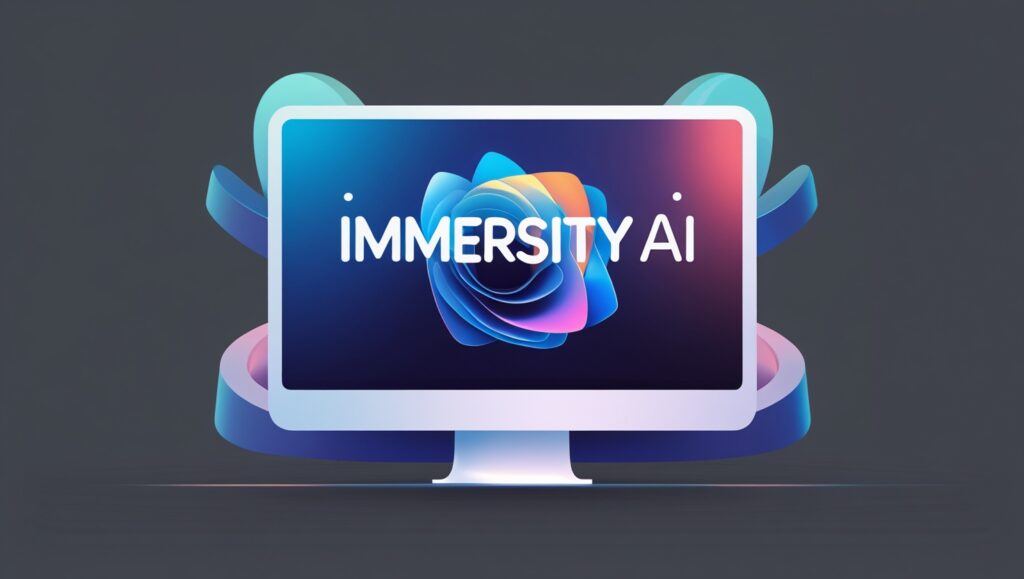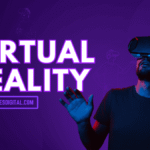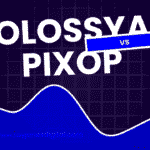
The boundary between flat, traditional media and three-dimensional experiences has never been thinner. With artificial intelligence reshaping how we create and consume visual content, a new wave of tools is making it possible to breathe life into ordinary 2D images and videos by converting them into stunning 3D experiences.
Immersity AI stands at the forefront of this transformation, offering creators, businesses, and everyday users the ability to add depth and dimension to their visual content without requiring expensive equipment or complex technical expertise. This revolutionary platform uses advanced machine learning algorithms to analyze 2D content and intelligently generate depth information, creating immersive 3D experiences that captivate audiences.
Whether you’re a content creator looking to enhance your social media presence, a business seeking to create more engaging marketing materials, or simply someone who wants to bring old family photos to life, understanding how Immersity AI works and what it can accomplish opens up exciting new possibilities for visual storytelling.
What is Immersity AI?
Immersity AI is a cutting-edge artificial intelligence platform that specializes in converting flat 2D images and videos into three-dimensional experiences. The technology works by analyzing the visual elements within your content—identifying objects, understanding spatial relationships, and calculating depth information—then reconstructing the media with realistic 3D depth.
Unlike traditional 3D creation methods that require specialized cameras, complex software, or extensive manual work, Immersity AI automates the entire process. Users simply upload their 2D content, and the AI handles the technical heavy lifting of depth estimation, layer separation, and 3D reconstruction.
The platform supports various output formats, including stereoscopic 3D for VR headsets, depth-enhanced videos for social media platforms, and interactive 3D models that viewers can explore from different angles. This versatility makes it valuable for numerous applications, from entertainment and education to marketing and personal projects.
How Immersity AI Transforms Your Content
Advanced Depth Estimation Technology
At the core of Immersity AI’s capabilities lies sophisticated depth estimation technology. The system analyzes visual cues such as object size, perspective, lighting, shadows, and occlusion to understand the spatial relationships within your 2D content.
The AI identifies foreground, middle ground, and background elements, then calculates how far each component should appear from the viewer. This process involves complex mathematical models that have been trained on millions of images to understand how depth works in the real world.
Intelligent Object Recognition
Immersity AI doesn’t just apply generic depth effects to your content. The platform recognizes specific objects, people, and scenes, applying appropriate depth characteristics based on what it identifies. For example, it understands that a person’s face should have subtle depth variations, while a landscape might require dramatic distance effects between mountains and sky.
This intelligent recognition ensures that the 3D conversion feels natural and realistic rather than artificially processed. The AI can distinguish between different types of content—portraits, landscapes, architecture, or action scenes—and applies optimization techniques specific to each category.
Seamless Integration and Processing
The transformation process is designed to be user-friendly and efficient. Users upload their content through a simple interface, select their desired output format, and let the AI process the conversion. Depending on the complexity and length of the content, processing times can range from minutes to hours, but the hands-off approach means you can work on other tasks while your content transforms.
Key Features and Capabilities
Multiple Output Formats
Immersity AI offers flexibility in how you experience and share your 3D content. The platform can generate:
Stereoscopic 3D: Perfect for VR headsets and 3D displays, creating separate images for each eye to produce the illusion of depth.
Depth-Enhanced Videos: Optimized for social media platforms that support 3D effects, these maintain compatibility while adding visual impact.
Interactive 3D Models: Allow viewers to change perspective and explore the content from different angles, creating engaging experiences for websites and presentations.
Anaglyph 3D: Traditional red-blue 3D glasses format for easy viewing on standard displays.
Batch Processing Capabilities
For users with multiple files or large projects, Immersity AI supports batch processing. You can upload entire folders of images or multiple video files and have them all converted automatically, saving significant time for professional workflows.
Quality Control and Customization
While the AI handles most of the technical work automatically, users retain control over the final output. The platform offers adjustment tools for depth intensity, allowing you to create subtle enhancements or dramatic 3D effects based on your creative vision.
Quality preview options let you review the 3D conversion before finalizing, ensuring the results meet your expectations. If certain areas need refinement, manual adjustment tools provide the ability to fine-tune specific regions.
Applications Across Industries
Content Creation and Social Media
Social media creators are finding new ways to stand out using Immersity AI’s 3D conversion capabilities. Platforms increasingly support depth-enhanced content, and 3D posts typically receive higher engagement rates than traditional flat media.
Travel bloggers can transform landscape photos into immersive experiences that make followers feel like they’re standing at the same scenic overlook. Portrait photographers can add subtle depth to headshots that make subjects appear to pop off the screen.
Marketing and Advertising
Businesses are leveraging 3D content to create more compelling marketing materials. Product photos converted to 3D can showcase items with greater visual impact, while promotional videos gain attention-grabbing depth effects that help brands stand out in crowded feeds.
Real estate professionals find particular value in converting property photos and walkthrough videos into 3D experiences, allowing potential buyers to get a better sense of space and layout even when viewing on standard devices.
Education and Training
Educational content benefits significantly from 3D enhancement. Historical photographs can be brought to life, making past events feel more immediate and engaging for students. Scientific diagrams and medical imagery gain clarity when presented with proper depth relationships.
Training materials become more effective when trainees can better understand spatial relationships and depth, particularly in fields like architecture, engineering, and healthcare.
Personal and Family Projects
Many users discover joy in transforming personal photos and home videos into 3D experiences. Old family photographs gain new life when converted to 3D, creating unique ways to preserve and share memories.
Vacation videos become more immersive, allowing you to relive experiences with added depth that helps recreate the feeling of being there. Special occasions like weddings or graduations can be enhanced to create memorable keepsakes.
Getting Started with Immersity AI
Account Setup and Onboarding
Beginning your journey with Immersity AI involves creating an account and familiarizing yourself with the platform’s interface. The onboarding process includes tutorial content that explains the different features and output options available.
New users often benefit from starting with simple, high-quality images that have clear foreground and background separation. This allows you to understand how the AI interprets depth and what types of results to expect from different content types.
Best Practices for Optimal Results
Certain types of content work particularly well with AI-powered 3D conversion. Images with clear depth cues—such as landscapes with distinct foreground and background elements, portraits with visible background separation, or architectural photos with linear perspective—typically produce the most impressive results.
High-resolution source material generally yields better 3D conversions, as the AI has more visual information to analyze. Good lighting and contrast also help the depth estimation algorithms work more effectively.
Understanding Processing Times and Costs
Processing times vary based on content complexity, resolution, and current platform demand. Simple images might convert in minutes, while high-resolution videos could take several hours. Planning projects with these timeframes in mind helps ensure smooth workflows.
Most platforms offer different pricing tiers based on usage needs, from casual users who convert occasional personal photos to professional creators processing large volumes of content regularly.
The Future of 2D to 3D Conversion
The technology behind AI-powered 3D conversion continues advancing rapidly. Future developments promise even more accurate depth estimation, faster processing times, and support for increasingly complex content types.
Integration with virtual and augmented reality platforms will likely expand, making it easier to create immersive experiences for these growing mediums. As mobile devices become more powerful and 3D displays more common, the demand for 3D content will continue rising.
Machine learning models will become more sophisticated at understanding context and applying appropriate depth effects for different scenarios. This evolution will make the conversion process even more automatic while producing increasingly realistic results.
Bringing Your Visual Content to Life
Immersity AI represents a significant leap forward in making 3D content creation accessible to everyone. By removing the technical barriers that previously required specialized equipment and expertise, the platform democratizes the ability to create engaging, immersive visual experiences.
Whether you’re looking to enhance your creative projects, improve your marketing materials, or simply explore new ways to experience your personal photos and videos, AI-powered 3D conversion opens up exciting possibilities. The technology continues improving rapidly, making now an ideal time to explore how these tools can transform your visual content.
Ready to add depth to your digital world? Start experimenting with 2D to 3D conversion and discover how artificial intelligence can breathe new dimension into your visual stories.

I am Ray Jones Digital
My current occupations: a Digital Marketer, Local SEO expert, Link Builder, and WordPress SEO specialist. Shopify SEO, Ecommerce Store Management, and HTML & WordPress Developer I have been practicing the above mentioned services for more than 10 years now As an SEO expert working with your ongoing projects.



